Muscle hardness and "kanshoho"
Explanatory Video
Understanding the Connection: Muscle hardness and "kanshoho"
“kanshoho” is a manual therapy technique that achieves muscle relaxation without invasiveness or muscle damage.
It can bring the muscles to a state of virtually zero tension, and it is characterized by its ease of skill acquisition and high reproducibility.
In the field of basic medicine (physiology), it has long been said that “muscles retain tension even in a resting state” or “muscles are always in a state of tension” (1).
The state of tension in muscles is also referred to as “muscle tonus”
“kanshoho” can achieve a state of virtually zero muscle tension, so you may want to confirm how much muscle relaxation can be achieved.
It involves comparing the hardness of an easily accessible and measurable object to the muscle after relaxation using “kanshoho”.
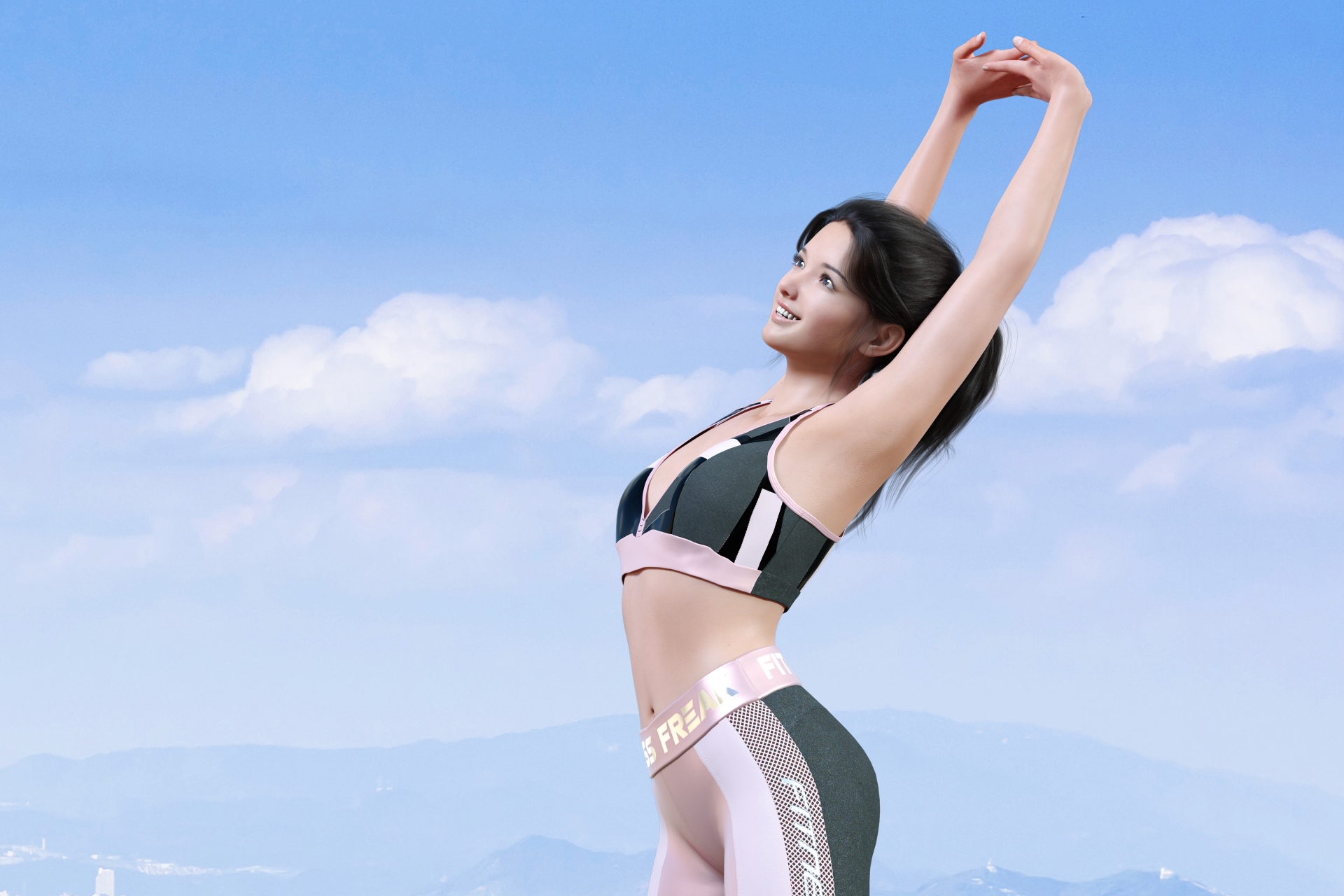
The hardness is measured using a “muscle hardness meter (digital display type muscle hardness meter TDM-Z2 (BT)) (2).”
(Note: The values on similar devices from other manufacturers will be almost the same.)
The muscle hardness meter displays air as “0” and metal as “99”.
In patients with chronic lower back pain, a muscle hardness of 50 or higher is common in the lumbar region (approximately 2/3 from the center outward) when in a seated position.
After Kanshoho treatment:
Temperature: 26℃
Humidity: 50%
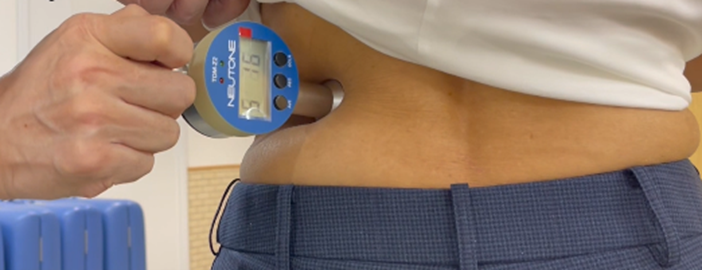
Female in her 50s
Lumbar Muscle Hardness: 16
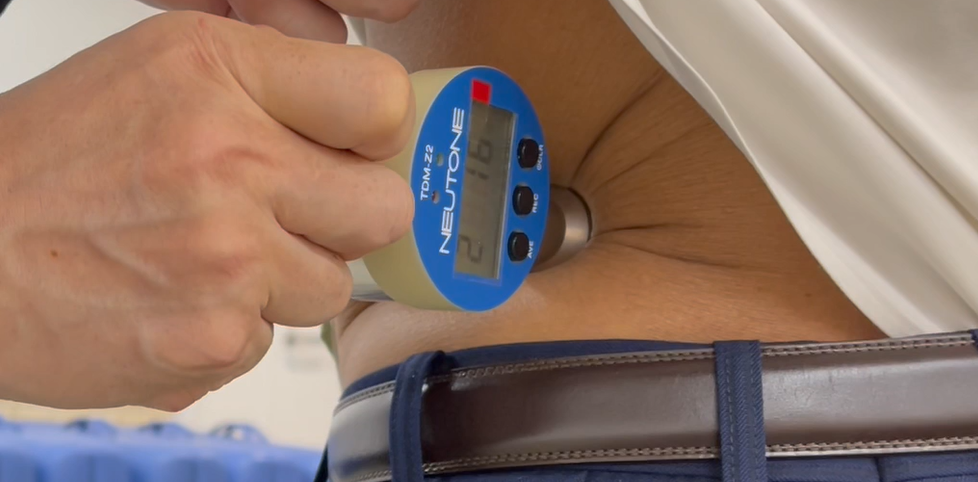
Male in his 40s
Lumbar Muscle Hardness: 16
After Kanshoho treatment:
Temperature: 26℃
Humidity: 50%

Female in her 50s
Lumbar Muscle Hardness: 16

Male in his 40s
Lumbar Muscle Hardness: 16
Rocky Mountain Marshmallow 300g
Temperature: 26℃
Humidity: 50%
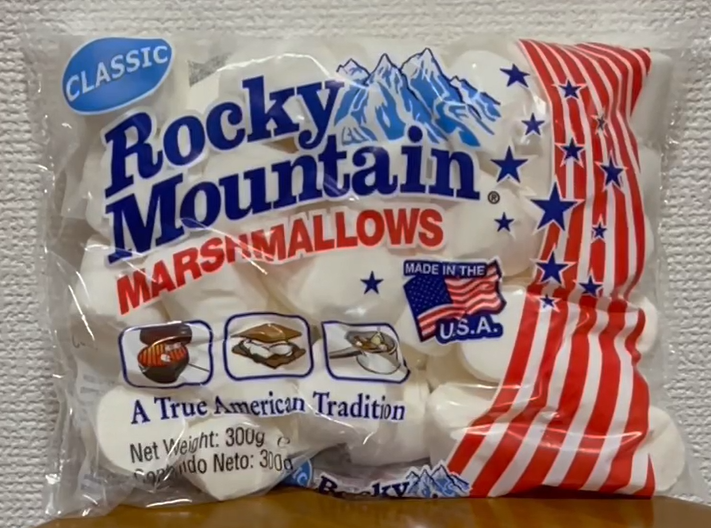
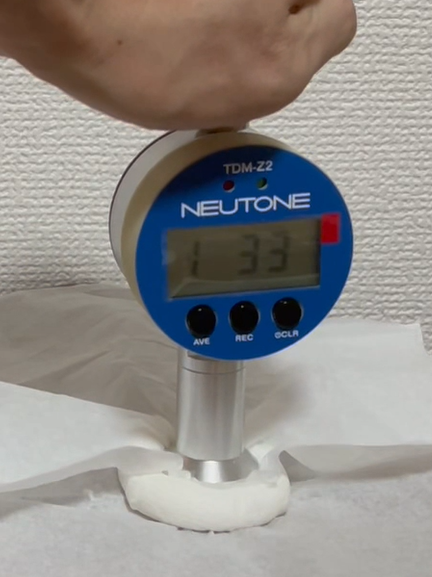
Orientation: Horizontal
Separated by tissue paper
Hardness: 33
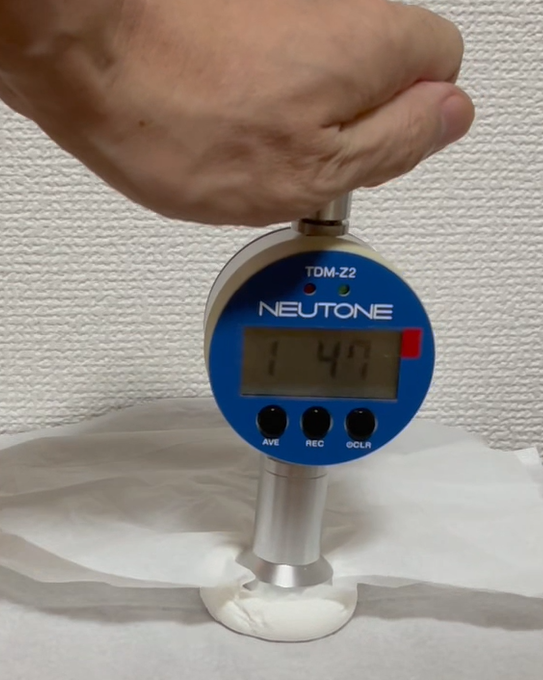
Orientation: Vertical
Separated by tissue paper
Hardness: 47
Campfire Giant Marshmallow 793g
Temperature: 26°C
Humidity: 50%
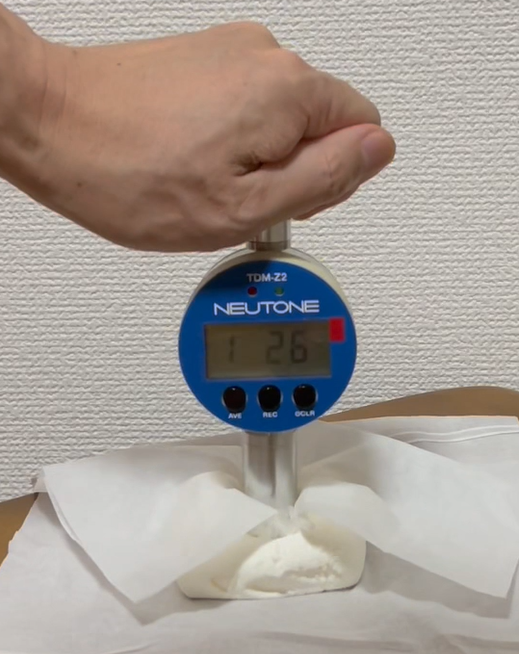
Orientation: Horizontal
Separated by tissue paper
Hardness: 26
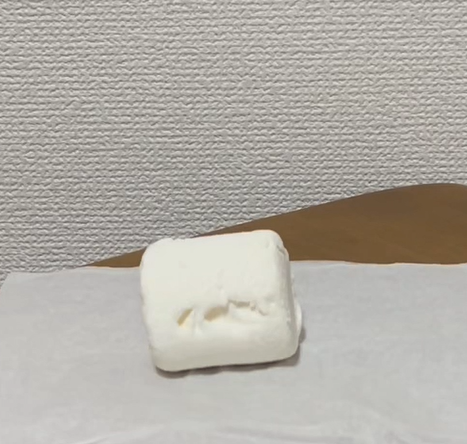
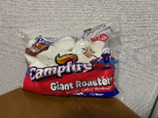
Rocky Mountain Marshmallow 300g
Temperature: 26℃
Humidity: 50%


Orientation: Horizontal
Separated by tissue paper
Hardness: 33

Orientation: Vertical
Separated by tissue paper
Hardness: 47
Campfire Giant Marshmallow 793g
Temperature: 26°C
Humidity: 50%

Orientation: Horizontal
Separated by tissue paper
Hardness: 26


Balloon (Air)
Temperature: 26℃
Humidity: 50%
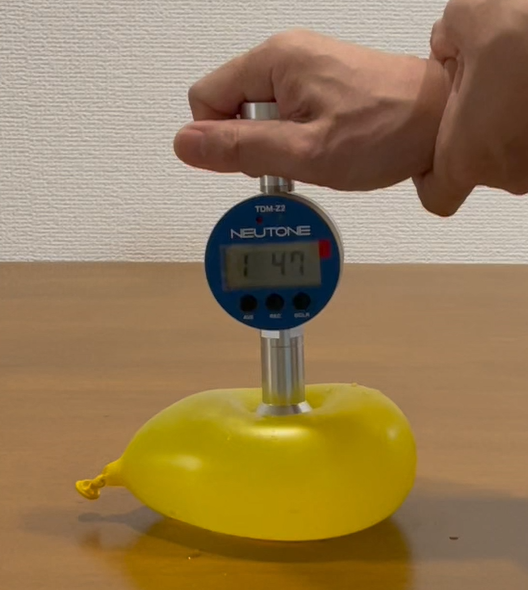
Air Volume: 1000cc
Hardness: 47
Balloon (Water)
Temperature: 26℃
Humidity: 50%
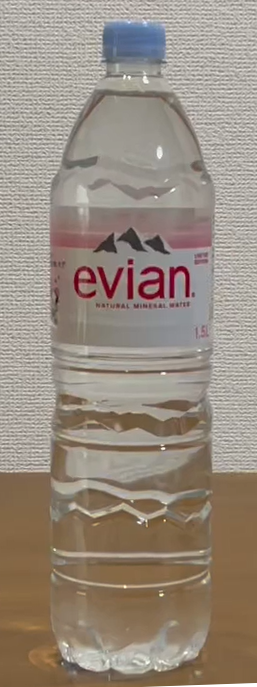
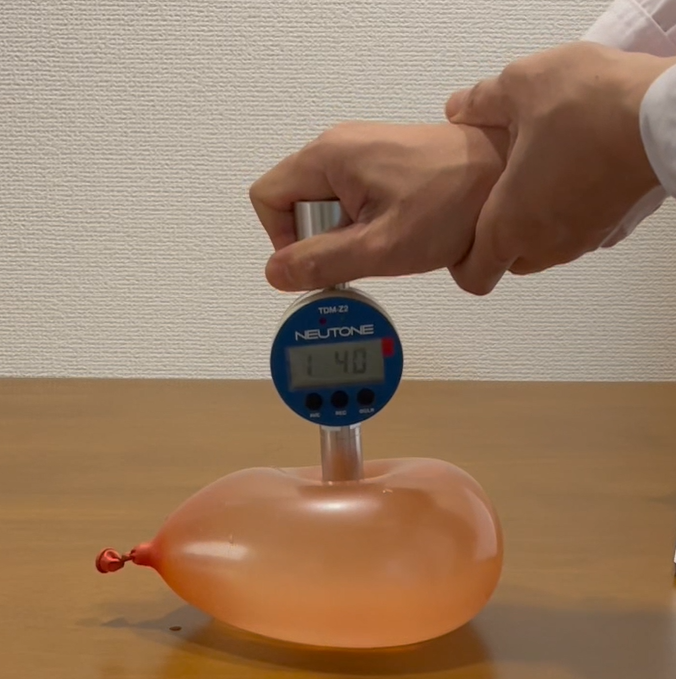
Water (Evian) Volume: 1000cc
Hardness: 40
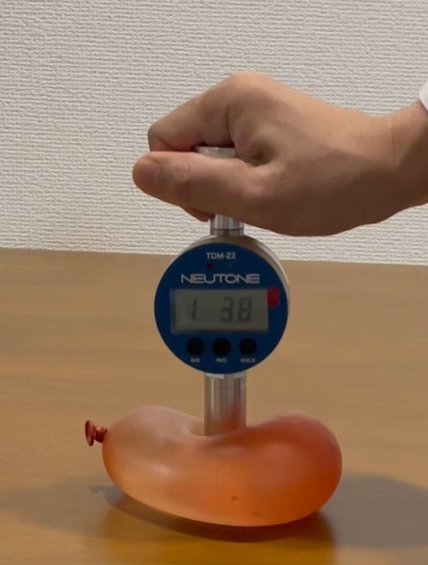
Water (Evian) Volume: 250cc
Hardness: 38
Balloon (Air)
Temperature: 26℃
Humidity: 50%

Air Volume: 1000cc
Hardness: 47
Balloon (Water)
Temperature: 26℃
Humidity: 50%


Water (Evian) Volume: 1000cc
Hardness: 40

Water (Evian) Volume: 250cc
Hardness: 38
Chair (Reference)
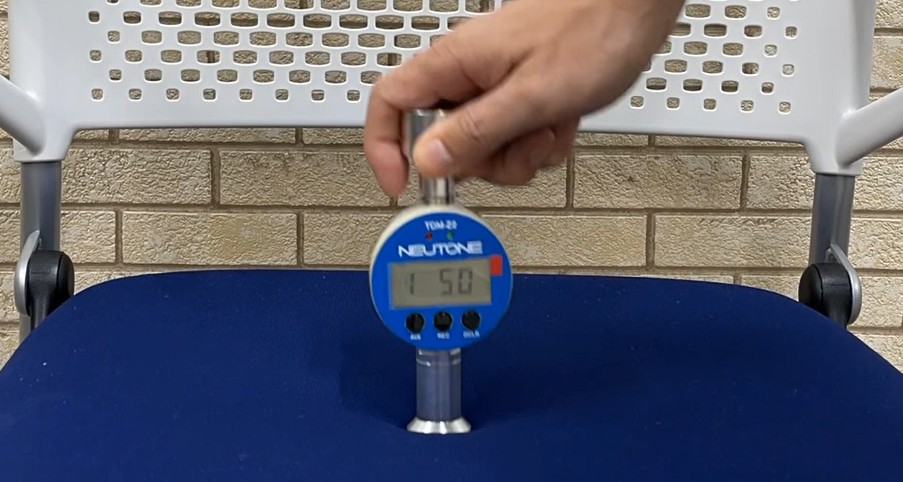
Material:Fabric
Hardness: 50
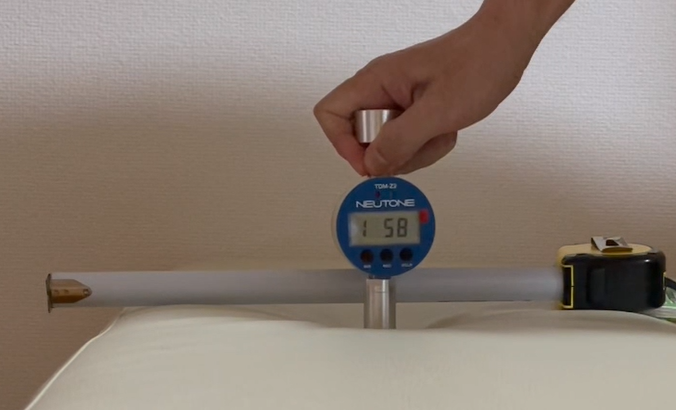
Material:Leather
Hardness: 58
Chair (Reference)

Material: Fabric
Hardness: 50

Material: Leather
Hardness: 58
A muscle hardness of 16 in the lumbar region feels like the subcutaneous area is as soft as water, and the fingertips of the abdomen and back can touch each other.
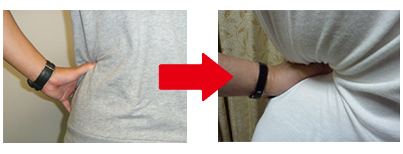
It is said that modern humans (Homo sapiens) emerged about 300,000 years ago, and now we have a non-invasive treatment method that can achieve a state of “virtually zero muscle tension” in muscles.
Muscles constitute approximately 50% of the body, and by performing “kanshoho” to achieve a state of “virtually zero muscle tension,” several scientifically understood benefits include:
・pain relief
・Increase in basal body temperature
・Enhanced production of white blood cells
・ Improvement in circulation
・ Elevation of muscle hormones
・ Lipid breakdown and reduction
These improvements can lead to alleviating various bodily discomforts.
Furthermore, achieving more flexible muscles can also lead to:
・Enhanced athletic performance
We hope that healthcare professionals worldwide will adopt the new muscle relaxation technique, “kanshoho” , which was introduced in 2007. By doing so, we aim to help as many people as possible who are suffering from pain and illnesses.
(1) John E. Hall, Yoshihiro Ishikawa, “Guyton and Hall Textbook of Medical Physiology, 13th Edition,” 79, 2018.
(2) https://satosokuteiki.com/upload/items/2816/tdm_z2.pdf